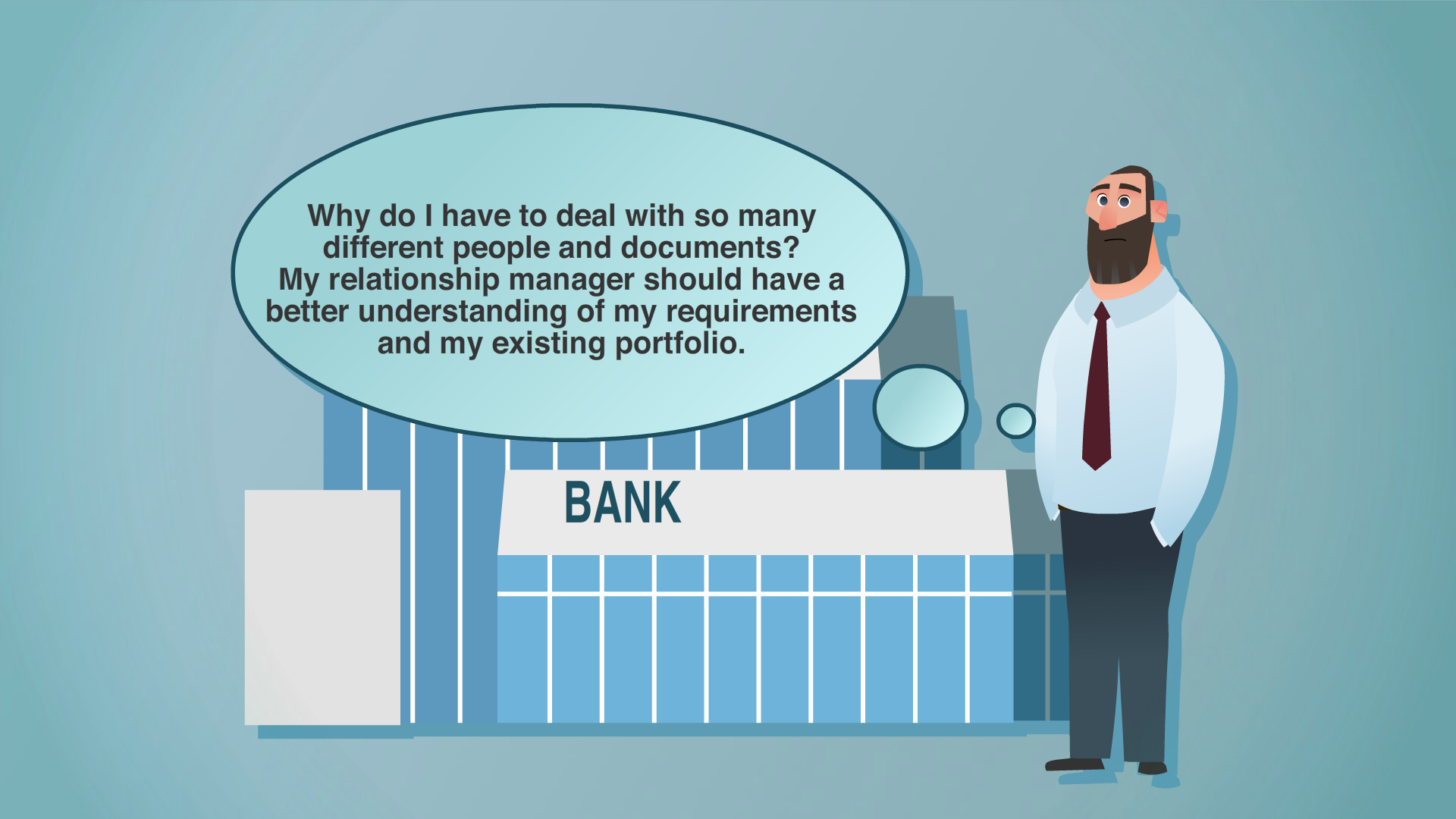Responsibly sourced materials, expert craftsmanship, competitive prices — your products should be selling out fast. So why aren’t they? Because no one can find them.
And that’s why searchable, detailed product listings are crucial for digital commerce.
"70% of online shoppers say product content can make or break a sale." *Forbes’ Product Content Matters: 70% Of Online Shoppers Say It Can Make Or Break A Sale
We get it. Writing product descriptions is time-consuming, error-prone and tedious. Especially for ecommerce and channel activation leaders managing a large catalog across marketplaces.
But product listings are typically your first and only opportunity to convert shoppers. You need to prioritize thorough, accurate ecommerce product listings. When you do, you benefit in more ways than one:
- Customers can actually find your products because they’re searchable across search engines, your website and online marketplaces.
- Well-crafted product descriptions entice browsers to become buyers, driving conversions across digital commerce channels and encouraging purchase decisions.
- You can build customer trust and long-term loyalty by writing product descriptions that accurately reflect the type of product they’re paying for.
And with over 2.7 billion consumers contributing to global e-commerce in 2024, getting your product descriptions and broader product detail pages (PDPs) right can pay off big.
The problem? Manually writing product listings that are accurate and consistent across multiple channels simply isn’t scalable if you want to continue expansion across global markets and channels.
That’s where Stibo Systems Product Experience Data Cloud (PXDC) comes into play. It helps you automate and scale product content creation, enrichment and syndication so you can launch and convert listings faster.
In this article, we're breaking down the best practices for optimizing product listing pages and how PXDC’s product information management (PIM) can help you scale.
Quick insights
- 70% of online shoppers say product content can make or break a sale — making accurate, complete product listings essential for conversion.
- Structured data powers search visibility across category pages and ecommerce platforms, helping your relevant products show up when and where shoppers are searching.
- Manual listing processes slow time-to-market and introduce errors, especially when teams rely on spreadsheets and disconnected systems.
- Product Experience Data Cloud centralizes product data so global teams of any size can work from a single source of truth, reducing duplication and inconsistencies.
- PXDC’s built-in validation and automated workflows reduce listing errors, rejections and compliance risks. Enhanced content — like videos, reviews and comparison charts — helps shoppers make confident buying decisions and reduces returns.
- PXDC’s syndication capabilities ensure listings meet each channel’s unique requirements, streamlining distribution across retailers and online marketplaces.
- Brands using PXDC launch faster, convert more and free up teams for higher-value work, like campaign planning and market expansion.
Why do product listings matter?
It’s no longer enough to post a few low-quality photos, a short description and a few reviews. Consumers expect complete, accurate product listings with rich media, sustainability information and detailed specifications that make a lasting first impression.
If you can’t deliver on all of that, would-be customers will scroll past your PDP, or worse, click on a competitor. But if you can? You increase your chances of catching a shopper’s attention and getting them to hit the add to cart button.
To do so, you’ll need to optimize your product listing page (PLP) by balancing compelling product details and images with search engine optimization-friendly (SEO) keywords that:
- Help consumers find, click on and purchase your products
- Boost brand visibility
- Drive marketplace performance
- Increase customer trust and confidence in your brand
"On Amazon, A+ Content helps bring your brand’s story to life by adding videos, enhanced images, shoppable product comparison charts and more to your Amazon product detail pages. Basic A+ Content can increase sales by up to 8% — and well-implemented Premium A+ Content can increase sales by up to 20%." *Amazon
Optimized product listings drive search visibility and rankings
Want to sell your products? Shoppers need to be able to find them. Whether you have your own ecommerce shop, sell through a distributor or leverage marketplaces like Amazon, your product listings must be discoverable.
"43% of all ecommerce traffic originates from Google's organic search results, yet approximately 75% of users never scroll past the first page of search results." *BigCommerce’s Ecommerce SEO: How Online Stores Can Drive Organic Traffic
The best way to be discoverable: with structured data and optimized keywords that drive search visibility and help the right buyer find your product at the exact right moment.
Structured data powers search. Both search engines and marketplace algorithms rely on structured data to understand your product listings and match them with shopper queries.
When you follow product listing page best practices, like consistently formatting product attributes — size, color, specifications, materials — your product listings become searchable. More importantly, discoverable.
Product Experience Data Cloud’s PIM capabilities facilitate structured data by centralizing and standardizing product data across all channels, driving more effective product listings that show up in search.
"Continual optimization is crucial to effective product listings. Digital shelf analytics provide real-time insights into listing performance — tracking visibility, engagement and conversions — so you can refine your strategy and beat out competitors."
But visibility is only part of the equation. The content in your product listing determines whether a would-be customer clicks and converts.
Product listings drive buying decisions
So, a shopper found your great product... but will they buy it? That depends on your product listing. Following product listing page best practices can help convert them.
Make sure you have complete, accurate listings that foster trust. Shoppers rely on PDPs to answer questions, preview products and reduce uncertainty. If your listing includes inconsistent or outdated information, or is simply missing details, shoppers lose trust and may hesitate — leading that visitor to quickly turn into a lost sale.
"Bad product info drives returns by misleading shoppers — unclear specs, outdated images and missing details can hurt your performance." *My Amazon Guy’s Bad Product Info Drives Returns: Prime Day Success Starts with Accuracy
Not only does a poor product listing diminish trust, but it can also drive sales to your competitors. A recent survey found that 53% of shoppers said that if they received poor product information, they’d abandon their shopping at the site and buy elsewhere.
Other consequences of getting product listings wrong include:
- Higher return rates
- Negative reviews
- Abandoned carts
- Missed sales and lost revenue
- Potential loss of customer loyalty and trust
The good news? PXDC’s AI-generated content and governance capabilities make sure your product data’s complete and conversion-ready. By automating data standardization and enrichment, you can limit manual errors and create consistent, accurate product listings at scale.
Keep in mind that even when you have accurate listings, they still need to meet the specific standards set by retailers and marketplaces to become best sellers.
Retailers and marketplaces have specific product listing standards
Accurate product details and rich content are essential to product listings, but they’re not all you have to consider. Getting them approved and keeping them live requires you to meet the strict listing standards set by retailers and online marketplaces, like:
- Accurate and unique product identifiers
- Factual product details, like specifications and materials
- Clear titles and descriptions that accurately reflect the product
- High-quality images (and sometimes videos)
- Seller information
- Returns and refunds policies
- Inventory
These standards are meant to provide consistency while maintaining compliance and driving customer satisfaction and user experience. And if your listings don’t meet these standards, your listings might be rejected, hidden or deprioritized in search.
Why these standards matter
Online marketplaces like Amazon and Walmart have detailed requirements for everything from character counts and image resolution to attribute formatting — all of which were designed to create an exceptional customer experience.
Dynamic product discovery and search are shrinking paths to purchase, says Forrester’s The Future Of Commerce (US) Vision Report. Product listings must be optimized for fast, frictionless shopping that creates a better CX. If your product data is incomplete or misaligned with a platform’s usability expectations, it won’t show up in search, or it might be removed.
"Manage various channel or platform standards with PXDC. It syndicates trustworthy product data across systems, ensuring proper formatting, enrichment and compliance with each channel’s unique standards."
You know why product listings matter, but what makes a product listing a good one? We’re breaking it down.
What makes a good product listing? 6 Product listing page best practices
The best product listings aren’t the ones with a decent product description and a few high-quality photos. They’re the ones that are easy to find, include enough information and rich media to let customers know exactly what they’re buying and build the trust that drives conversions.
No matter where you’re selling, these six product listing page best practices will give you the key elements to build product listings that convert across every channel.

1. Use accurate, up-to-date product specifications
Imagine wanting to buy a TV console. You go to the PDP, looking for the product specifications to see if it can fit in your apartment’s small living room. You order it only to discover upon delivery that the specs are way off, and now you have to return it.
Not a great customer experience.
Product specs are crucial not only to a good CX but in helping customers see if your product meets their needs. When your specs are outdated or incorrect, you confuse potential customers, get poor reviews and likely see increased returns.
And that’s why specs need to be technically accurate, updated in real time across all channels and formatted in a consistent manner. And if you want your listings to drive conversions, make sure your specifications include things that customers want to know most, like:
- Dimensions
- Weight
- Materials
- Compatibility
2. Write clear, engaging product titles and descriptions
Think of your product title as the first impression. Shoppers see it and it either invites them to visit the PDP or keeps them scrolling through other product categories. If they get to your PDP, your product description is what convinces them to buy.
Here’s how you can optimize both for conversions:
- Make your title clear and concise, like West Elm Mango Wood Brown Media Console vs. Brown Wood Console
- Use a keyword-rich title that’s not overstuffed
- Keep the title specific to the product’s core attributes, like brand, size and color
- Highlight key features and benefits in your product description
- Anticipate common questions and answer them
- Avoid jargon, overly technical language or vague details
- Make your product description as clear, relevant and skimmable as possible
You should also consider adding star rating and reviews — according to Forrester’s The Future Of Commerce (US) Vision Report, over three-quarters of US Gen Z and Millennial online adults say it’s important that brands offer ratings and reviews on their website.
Pro tip: Use bullet points for key features and keep paragraphs to make your descriptions more readable, especially on mobile.
3. Add rich media
Shoppers want to see what they’re buying. Descriptions provide much-needed context, but high-quality images, videos and 3D assets help them visualize the product, see the features they’re looking for and make more confident buying decisions.
"3D product images can increase conversions by 250%."
Whether it’s a lifestyle image that lets customers see how a product fits into a space, a video demo of how it works, a carousel of images or a 360° view that shows every angle, rich media drives engagement and conversions.
Add enhanced content to deliver below-the-fold content that meets retailer and marketplace standards while giving shoppers everything they need to click “Add to cart.”
4. Align attributes and tags to search filters
You already know — if your products aren’t searchable, they’re not shoppable. Your listings need to match how customers use filters and search for similar products. It starts with aligning product attributes and tags to search filtering options.
Make sure you consistently format attributes (like color, size and materials) and metadata (like subcategories and brand) and match them to filters used in online marketplaces and in ecommerce in general.
Doing so gets rid of friction in the buying journey, making it easier than ever for customers to use sorting options properly, click through and buy your products.
5. Use channel-specific formatting and compliance
Every ecommerce site has its own rules, from Shopify and Amazon to Walmart, Target and niche platforms like Etsy. The product listings on your web page need to adhere to each platform’s formatting and compliance requirements.
A one-size-fits-all approach to optimizing product listing pages simply won’t cut it. Different marketplaces and retailers may all require titles, descriptions and photos, but the specifics can vary wildly:
- Specific character limits for headers, titles and descriptions
- Unique product identifiers (like GTINs or SKUs)
- High-resolution images, videos and swatches
- Structured attributes and metadata
- Clear return and shipping policies
- Compliance with regional regulations and certifications
While these are all product listing page best practices, they’re also required if you want your listings approved and to show up in search. And with Amazon getting more traffic from search engines than any other ecommerce website (over 459 million global average monthly search visits), you want to show up in search.
Pro tip: Use Product Experience Data Cloud’s enhanced content and syndication capabilities to tailor listings by platform. Your products will stand out to shoppers and meet platform standards.
6. Use a reliable classification and taxonomy
Imagine finding the product you’re looking for, but all the crucial details are spread throughout the PDP, with no clear structure or logical flow. It creates a frustrating customer experience and can impact performance. Your product listings need structure.
Classification and taxonomy — how you organize and label your product data — play a critical role in how easily shoppers can find, understand and trust your list of products. Without structure or an outdated taxonomy, not only do you confuse shoppers, but you also encounter other problems, like:
- Miscategorized or hard-to-find products
- Filters and search functions that don’t work properly
- Cross-channel syndication errors
Or, you can build a reliable taxonomy that ensures your product attributes are formatted and aligned with how people search and shop for products.
Our Product Experience Data Cloud can help you create and maintain a scalable taxonomy by:
- Centralizing product classification across systems and teams to eliminate silos and inconsistencies
- Standardizing attributes and categories to meet retailer and marketplace requirements
- Supporting flexible product hierarchies for bundles, variants and custom configurations
PXDC makes managing your product data easier, so you can publish faster and get your product listings to show up in search. It lets you manage sorting options, list view, grid view and number of items displayed to improve page design and browing.
How manual processes slow down product listing creation
When you have a small catalog, creating product listings manually seems manageable. But as your catalog grows and you start selling across channels — like your site, Amazon and Target — what was once doable is now a bottleneck.
And when you’re working with disconnected systems, spreadsheets and approval workflows, everything grinds to a halt. Instead of fast product launches that generate revenue, you’re stuck:
- Hunting down data across siloed systems and sources (like spreadsheets)
- Reformatting content for each channel you sell on
- Chasing down approvals across departments
- Manually copying and pasting product details across systems
These patchwork solutions are incredibly inefficient and potentially risky. Manual data entry introduces errors, creates inconsistencies across platforms and can delay launches that lead to a poor customer experience and lost sales opportunities.
Here are some of the most common operational pain points — and how PXDC helps solve them.
Too many spreadsheets and data sources
Despite advances in technology, a wealth of product data still lives in spreadsheets and legacy systems. It’s often spread across disconnected systems, making it impossible to maintain accuracy, speed or consistency.
Instead of seamless product launches across all your ecommerce channels, you’re wasting time searching for the most up-to-date product specifications, images and descriptions — all without certainty that you actually have the most accurate data.
The result? Slowed listing creation and increased risk of errors before the product listing even goes live.
Repetitive data entry and reformatting
Manually entering data or copying and pasting product details is innately error-prone, but it’s also incredibly time-consuming. And when you’re trying to publish multiple product listings across a dozen different platforms, you can’t afford to manually re-enter the same product specs and descriptions or upload the same images over and over.
Plus, re-entering all the product details to adhere to different platform standards adds another layer of complexity, slows down time-to-market even more and could even hurt your listing quality.
Inconsistent content across channels
Lost sales. Higher return rates. Mismatched expectations. These are all the result of inconsistent product listings. When your listings vary across channels — whether it’s different descriptions, images or specifications — they create customer confusion and weaken their trust in your brand.
Without a centralized system, you can’t maintain the uniformity needed to create accurate, consistent product listings across your site and marketplaces.
Delays in review and approval processes
Another roadblock to speedy product listing creation? A lack of automated workflows. Without them, you’re stuck in back-and-forth email threads trying to get approval to go live. Approvals become a bottleneck, and you lose out on revenue while your product listings sit in limbo.
These challenges are frustrating, time-consuming and costly. But with our Product Experience Data Cloud, you can eliminate bottlenecks to build a faster, more scalable product listing process.
How PXDC helps you create better product listings — and fast
Product Experience Data Cloud centralizes, validates and syndicates your product content across internal systems, teams and your ecommerce channels. Bringing together the power of PIM, enhanced content and seamless syndication into a single cloud-based, composable solution, Product Experience Data Cloud helps you:
- Adhere to product listing page best practices
- Launch product listings faster
- Reduce listing errors
- Deliver consistent, high-performing listings on every channel

One place for all your product content
PDXC's PIM core acts as a reliable data foundation for all product data, centralizing structured content, like:
- Product specifications
- Descriptions
- Images
- Video
- And more
It allows ecommerce, marketing and operations teams to work from the same, governed data — no more data silos, duplication or inconsistencies across channels. Teams can easily apply a template to every PLP or landing page to maintain consistency and optimize top of the page design for shoppers.
Built-in validation ensures data quality
Product Experience Data Cloud automatically enforces data governance through built-in validation rules that verify accuracy, completeness and formatting. This ensures you’re working with high-quality and trustworthy product data that meets both internal standards and external compliance requirements before your listings go live.
Approval workflows keep teams aligned
With configurable workflows that route product content for approvals across all teams involved, PXDC streamlines cross-functional collaboration. The result? Reduced bottlenecks and increased alignment across teams, which helps you create more accurate, better product listings with effective CTAs to drive conversions and checkout completion.
Faster updates across all digital channels
Instead of manual updates that can introduce errors and take time away from other higher-priority tasks, PXDC enables real-time publishing and version control, so any product data updates are instantly reflected on your ecommerce homepage, marketplaces and retail partners.
Product Experience Data Cloud allows for the agility brands need to respond quickly to market changes, seasonal promotions or compliance updates — without manual rework. You can highlight popular products at the top of the page and trigger a sense of urgency to drive faster purchases.
Quick and easy syndication to retailers and marketplaces
PXDC’s product data syndication capability integrates directly with virtually all major retailers and marketplaces, formatting and distributing product data to meet each channel’s unique requirements.
It also supports enhanced content — rich media, like high-quality images, videos, reviews (social proof), comparison charts, shipping policies and certifications that help shoppers make informed buying decisions.
Enhanced content is embedded within Product Experience Data Cloud’s syndication workflows, so updates are automatically pushed to every channel. This reduces friction, improves listing quality and helps brands stand out — leading to fewer returns, better reviews, higher conversion rates and opportunities for customers to save items to their wishlist.
How to create a better product listing process
Creating best-selling listings starts with improving how you manage your product data and then following product listing page best practices. From auditing existing workflows to rolling out a scalable PIMP solution, here are a few ways you can build a more efficient and accurate listing process optimized for conversions.
Audit your current product listing process
First up? Auditing. Map out how your teams created product listings today:
- Where does the data come from?
- How is it validated?
- What systems do you use?
Asking the right questions and thoroughly reviewing and identifying inefficiencies, redundancies and gaps helps you understand what’s causing delayed launches, where you can reduce risk and how you can create a more efficient process built around reliable data.
Identify content gaps and approval bottlenecks
Next, start looking for missing product details, outdated specs or inconsistencies in formatting across different channels. Then, assess how long it takes for listings to get approved — if teams are stuck in email threads or waiting for feedback, you’re losing time where your product listings could be generating revenue.
Paired with trustworthy product data and seamless syndication, streamlining approvals can help you launch faster with accurate listings that build customer trust.
Standardize core attributes across systems
Customers expect consistency no matter where they shop. If one listing includes 3D photos, videos and enhanced content but another only includes outdated photos, you risk losing sales and creating a confusing, poor CX.
Standardizing attributes across systems ensures your listings are searchable, compliant and aligned with retailer requirements. It also reduces errors and simplifies syndication. Implement a scalable PIM solution
Manual processes can’t keep up with growing catalogs and evolving channels. A scalable PIM solution — like Product Experience Data Cloud — centralizes product data, automates validation and approvals and powers real-time updates across platforms. It’s the foundation for building listings that convert and scale.
5 Benefits of building PIM-powered listings with Stibo Systems PXDC
The reason our Product Experience Data Cloud is so powerful is because it combines PIM, product onboarding, enhanced content and syndication into a single software-as-a-service (SaaS) solution.
When they all work together, PXDC helps you streamline listing creation and accelerate your time to market because you’ve got a foundation of trustworthy product data for every use case.
Take a look at the five business outcomes our customers achieve with Product Experience Data Cloud.

Build better product listings with Stibo Systems
Product listings are make-or-break in digital commerce — they either entice shoppers to “Buy now” or scroll past to the next listing. The difference between those that sell and those that get skipped over? The ones that convert are complete, accurate and consistent everywhere.
But getting every product listing right, across every channel, isn’t easy — especially at scale. That’s where PXDC comes into play.
Stibo Systems Product Experience Data Cloud helps brands and manufacturers streamline listing creation with a centralized, governed foundation of product data. By combining PIM, enhanced content and syndication into a single composable solution, Product Experience Data Cloud helps you launch faster, reduce errors and deliver high-performing listings across every digital shelf.
Ready to build better product listings?
See how PXDC can help you create smoother workflows, scale smarter, boost listing performance and stand out everywhere you sell your products.










































































































































































































